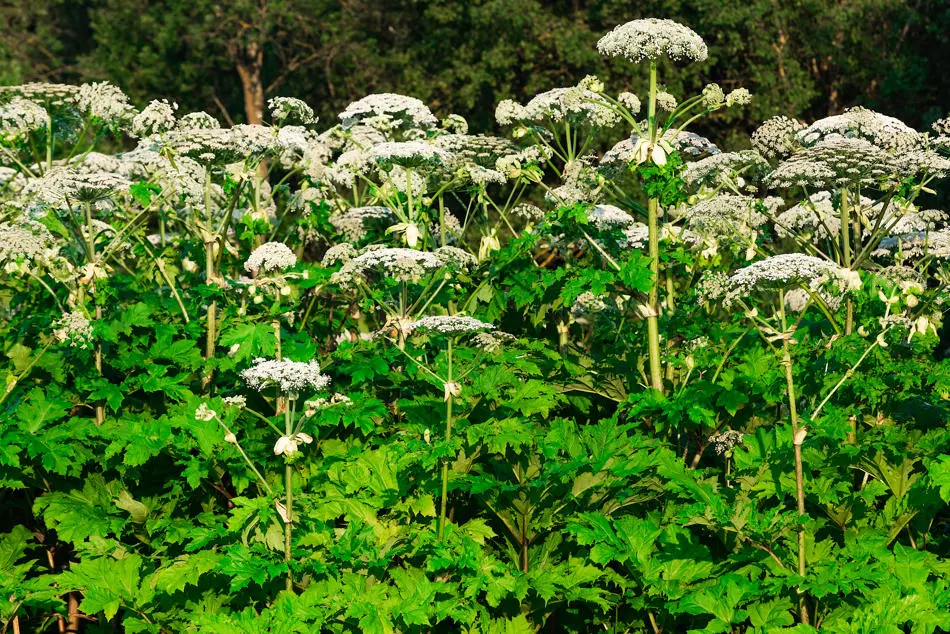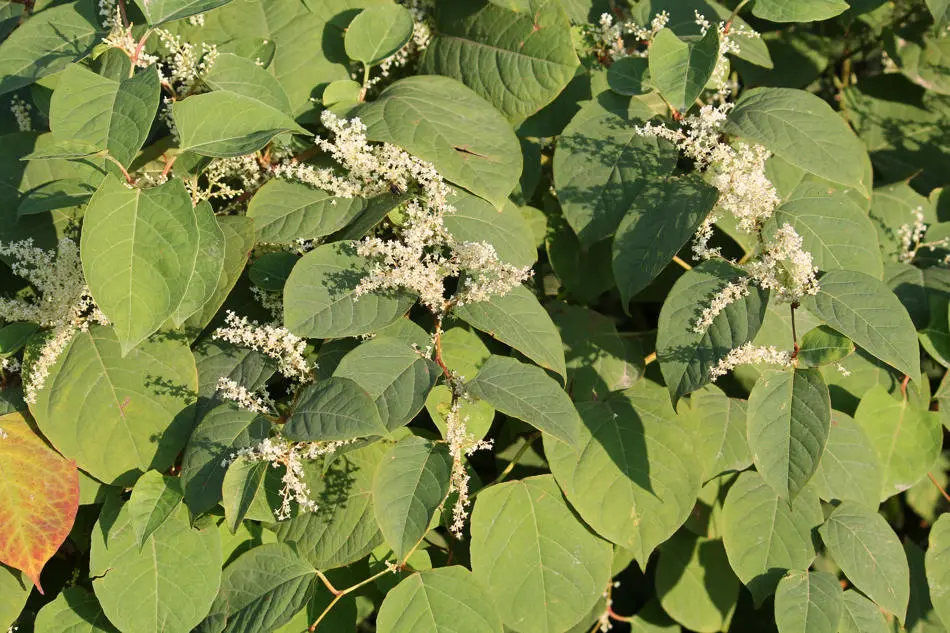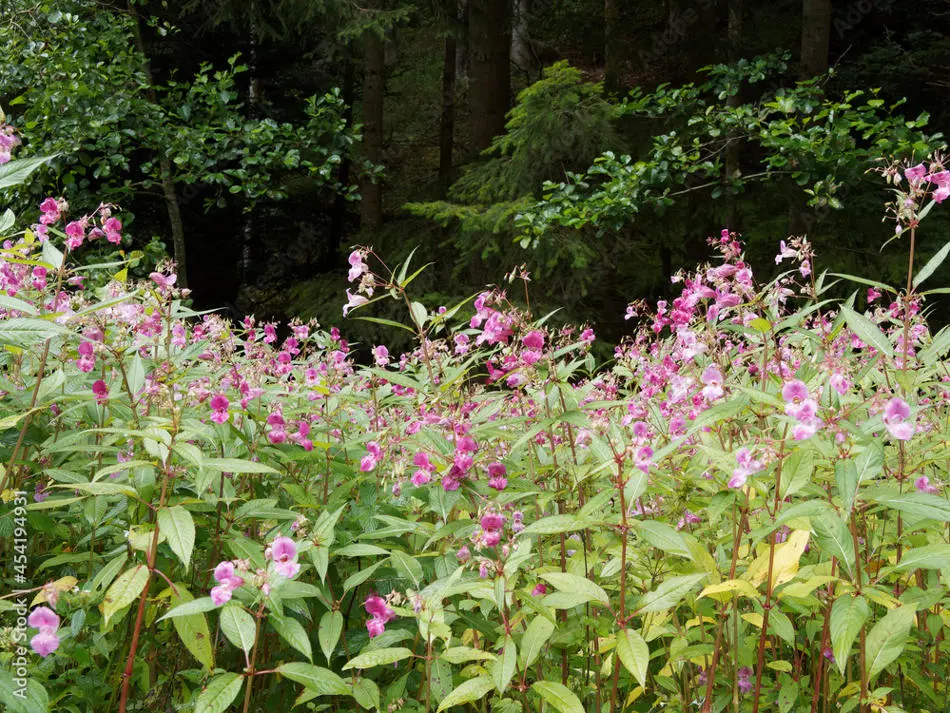Giant Hogweed, Japanese Knotweed and Himalayan Balsam are non-native plants and are highly invasive as they have no natural enemies to control them in the United Kingdom. As a result, they out compete native plants leading to large groups of plants that grow very tall.
This page provides guidance for you to:
- Find out how to identify these plants
- Know what to do if you find them on private or public land
Giant Hogweed
Giant Hogweed is a fast growing invasive plant that mainly grows next to water, in damp meadows or on derelict land.
Giant Hogweed sap can cause painful burns to humans and animals, making skin sensitive to strong sunlight.
Do not touch these plants. If you do come into contact with the sap, you should wash the area thoroughly, keep out of direct sunlight and seek medical attention.

Identifying Giant Hogweed
Giant Hogweed is a tall, cow parsley-like plant with thick bristly stems that are often purple-blotched. It can reach a height of 13 feet (4 meters).The flowers are white and held in umbels facing upwards about 50 centimetres in diameter, looking like flat-topped clusters similar to carrots or cow parsley.
Giant Hogweed on private land
If you see Giant Hogweed on private land, such as a neighbouring property, construction site or agricultural fields, please inform the land owner. It is not illegal to have Giant Hogweed growing on your land, but it is an offence to cause or allow it to spread. Control of this plant is the responsibility of the landowner. You must not:
- Remove or dispose of Giant Hogweed as it could cause the plant to spread, which is an offence
- Dispose of Giant Hogweed in your brown recycling bin or take it to a household waste and recycling centre, as this is an offence. It must be disposed of as controlled waste
Giant Hogweed on public land
We make every effort to contain the spread of Giant Hogweed and Japanese Knotweed on public land. If you do find any on public land within the borough of Bury, please report this to us.
Japanese Knotweed
Japanese Knotweed is a highly invasive weed which overwhelms other plants. It spreads rapidly, up to 10 cm per day, and can reach a height of 10 feet (3 meters). It can:
- Grow almost anywhere
- Cause structural damage to buildings and other structures by growing through cracks in masonry
- Reduce land values
- Cause difficulty in getting a mortgage

Identifying Japanese Knotweed
Japanese Knotweed has green shovel shaped leaves, bamboo-like stems and small white flowers during the months of September and October.
Japanese Knotweed on private land
It is not illegal to have Japanese Knotweed growing on your land, but it is an offence to cause or allow it to spread. Control of the plants is the responsibility of the landowner. You must not:
- Remove or dispose of Japanese Knotweed as it could cause the plant to spread, which is an offence
- Dispose of Japanese Knotweed in your brown recycling bin or take it to a household waste and recycling centre, as this is an offence. It must be disposed of as controlled waste
If you see Japanese Knotweed on private land, such as a neighbouring property, construction site or agricultural fields, please inform the land owner.
Japanese Knotweed on public land
We make every effort to contain the spread of Giant Hogweed and Japanese Knotweed on public land. If you do find any on public land within the borough of Bury, please report this to us.
Himalayan Balsam
Himalayan balsam was introduced as a garden plant in 1839, but soon escaped and became widely naturalised along riverbanks and ditches, especially close to towns.
It is a non-native invasive plant species that out-competes native plant species in ecologically sensitive areas, particularly riverbanks.
It's dense stands can increase the likelihood of flooding during high rainfall and, during winter, die back leaving the riverbanks exposed to erosion.
Its explosive seed pods aid its spread by sending the seeds into the river, causing further dispersal downstream. It flowers from July to October.
It is an offence to plant or otherwise allow this species to grow in the wild.

How you can help control Himalayan Balsam
Identifying Himalayan Balsam
Himalayan Balsam has large, pink flowers shaped like a bonnet; these are followed by hanging, green seed pods.
Other non-native plants
The Non-Native Species Secretariat (NNSS) has responsibility for helping to co-ordinate the approach to invasive non-native species in Great Britain.
If you are interested in finding our more about other invasive non-native species, you can visit the NNSS website to look up information about specific species and learn how to identify them.